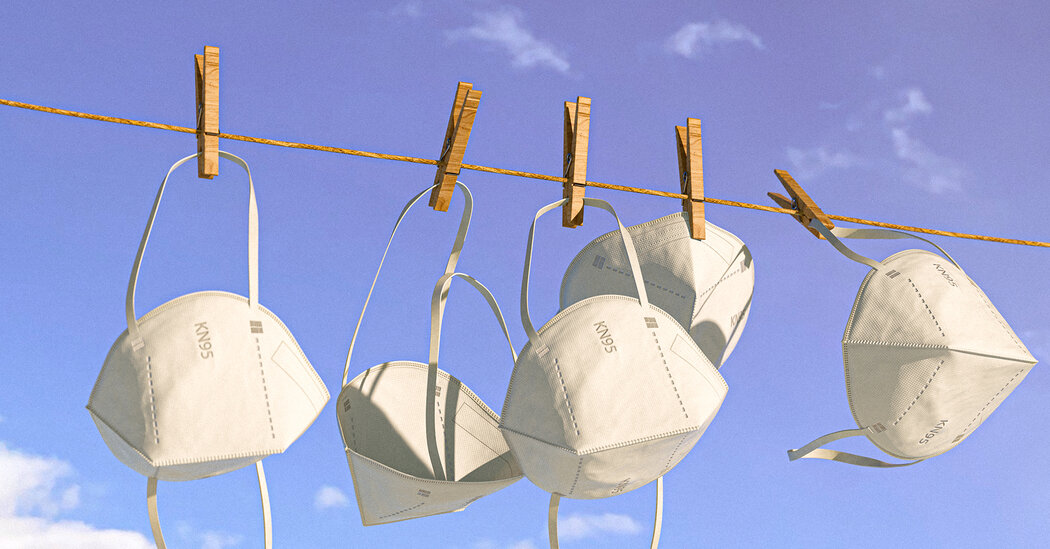
I asked Dr. Marr for additional tips on how to take care of a respirator mask to maximize its use. Here’s her advice.
Q: How can we make sure our masks keep filtering particles?
Dr. Marr: This ability can be compromised if any part of the mask is physically damaged in such a way to create leaks. This could be a tear or hole in the mask, a crease that means it doesn’t seal to the face, or straps that are too loose to pull the respirator closely to the face.
Q: Can a mask get saturated with particles?
Dr. Marr: People might be concerned about the respirator “filling up” with particles, such that the filter material doesn’t work anymore, but respirators are designed to handle a large amount of particles and still maintain their filtration ability. Aaron Collins (@masknerd on Twitter) points out that an N95 is designed to handle 200 milligrams of particles, which would be equivalent to wearing it nonstop for 200 days in very polluted air such as in Shanghai. The straps or nose bridge will break, the respirator will lose its shape, or the respirator will become visibly dirty before this happens.
Q: If I’m exposed to an infected person, will my mask be contaminated?
Dr. Marr: It is possible that virus could be on the surface of the respirator, and you could touch it and transfer it to your eyes, nose or mouth. To minimize this risk, you should handle the respirator by the edges and straps and avoid touching the area in front of the nose and mouth. Over time — several hours — the virus will die off, so we probably don’t need to worry about accumulating more than one day’s worth of infectious virus on the material. There is a scary-sounding study that reports that the virus survives for 14 days on an N95, but the researchers dripped a huge amount of virus onto the material — like if you intentionally spit on the mask — and removed it by soaking it in liquid, which will transfer more than just touching.
Q: So how long do viral particles really survive on a mask?
Dr. Marr: We are studying this question using a more realistic way of getting aerosolized virus onto an N95, and the virus decays to nearly undetectable levels in 30 minutes.
Q: What do you think about the “40 hours of use” rule?
Dr. Marr: Forty hours of total use, whether over five eight-hour periods or a bunch of shorter periods, should be fine. The straps may become too loose or break, the respirator may lose its shape, or it may become visibly dirty before the 40 hours are up, in which case you should replace it. I have an N95 that I have worn for two round-trip plane trips totaling 25 plus hours and for attending church a few times, going to the store a few times, and attending a gymnastics meet, and it’s finally getting dirty enough — mainly from rubbing against my face — and losing its shape, such that I’m planning to toss it.
Q: I’ve seen advice to air your masks out in multiple paper bags, labeled with the day of the week, and to rotate masks every five days. But most people just toss their masks in a drawer or purse, or hang them on hooks. Does it really matter?



